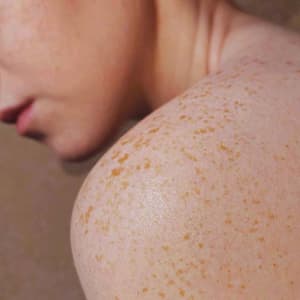 TCA Peel
TCA PeelWhat The Latest Sunscreen Innovations Mean For Your Sun Care Routine
Sun protection products have come a long way since they first originated in the 1930s, and now there are more options than ever. From head to toe, here’s what you need to know about keeping your skin safe from the sun.
While the concept of sun protection dates back to ancient times, the modern interpretation of sunblock was, ironically, born out of sunburns. In the 1930s, a group of innovators scattered around the globe were working to find a cure for burns — little did they know that their efforts would come to prevent them all together and combat skin cancer.
In Australia, chemist H.A. Milton Blake (creator of sunscreen maker Hamilton) started developing a formula in the early 1930s, and L'Oréal-founder Eugene Schueller developed a sun care product of his own in 1936. But that’s not all. In 1938, Swiss chemistry student Franz Greiter developed a concoction known as Gletscher Crème (a.k.a. Glacier Cream) after suffering a bad burn during a climb up Piz Buin peak. Not long after, American airman and pharmacist Benjamin Green patented a cream to aid soldiers fighting in World War II that was bought, reformulated, and distributed by Coppertone.
When it came to consistency, the originals were thick, oily, and oftentimes low in protection – Greiter’s cream had a sun protection factor (read: SPF) of just two. But, with time, sunscreen formulations evolved into the lightweight and absorbent compositions we have today. Modern-day sunscreens, sunblocks, and sun care products are lightyears ahead of their predecessors and only getting better. The AEDITION spoke with several skincare experts to understand the advancements and how to best keep yourself protected.
Sun Protection in the Modern Age
Despite the terms being used interchangeably, sunscreen and sunblock are different in their chemical makeup and abilities — though both have a similar modus operandi: skin protection. Sunblock quite literally blocks UV rays from absorbing into the skin, while sunscreen absorbs the rays. When he created the concept of the Sun Protection Factor (SPF) in 1962, Greiter wanted to solidify a standardized scale that could be used to quantify the strength of sun protection products. Needless to say, it is still in use today.
Wander down the sun care aisle in the drug store, and you’ll see that today’s products have SPF that goes up to 100 and higher. So, what number SPF should you reach for? “I recommend a broad-spectrum SPF 30 or higher,” says Julie Russak, MD, a New York City-based board certified dermatologist. “Make sure you're applying a liberal, even amount and reapplying every two hours.”
Finding the right sun protection product for your routine means understanding the necessary care for your skin type. No matter where you fall on the Fitzpatrick scale, it is important to note that no skin type is immune to sun damage or skin cancer. In an effort to increase compliance (a recent study from the American Academy of Dermatology (AAD) found that while 76 percent of Americans agreed sunscreen was important, only 40 percent where it regularly), brands have gotten increasingly innovative with their formulas. Below are three such examples:
1. Sun Care Meets Skincare
When you consider that skin cancer is the most common form of cancer in the United States, it should come as no surprise that the market is full of sun protection options. From sunscreen-infused lip balms and eye shadows to UV-fighting hair products, brands like Coola, Sachajuan, and Supergoop! (to name a few) are offering high-tech formulas with sun protective agents.
Hybrid products have also become increasingly popular. “In addition to advanced antioxidants which help neutralize free radicals, we are big fans of ingredients that help to stimulate collagen and elastin,” explains Patricia Boland, vice president of research and development at Colorescience. Actives like peptides do just that, and the brand also includes ingredients that calm inflammation, hydrate, and help strengthen the skin barrier.
Sun care brand Love Sun Body developed its forthcoming 100 percent Natural Origin Moisturizing Mineral Face Sunscreen with SPF 30 to double as a moisturizer. “Many sunscreens are very drying, and some people might have areas of the skin that need additional moisturization,” says Love Sun Body founder Dr. Terry Zickerman. For products to dry down quickly, drying agents are added — creating an adverse effect on the skin. In this case, the lightweight formula hydrates the skin, but also wears well under makeup and is safe for the eye area.
2. Improved Ingredients
Countless studies and years of research show that sun protection is the biggest factor in both preventing skin cancer and slowing down the visible signs of aging. As it relates to physical (a.k.a. mineral) sunscreen formulas, “zinc oxide and titanium dioxide are active mineral compounds to physically block both UVA and UVB,” Dr. Russak says. When choosing between the two, zinc oxide, she explains, “is more effective at blocking both long and short UVA rays and has antioxidant and healing properties.” Mineral formulas have become less chalky and more absorbent, but know that they still may require a bit more work to rub in.
Chemical sunscreens ingredients, meanwhile, are under increased scrutiny over their safety, and customers are taking notice. “We’ve found that people are educated in the harms of sun rays but what stops them is the ingredients list,” Dr. Zickerman says. “People might question sunscreen as a deterrent because of past FDA studies and the uncertainties in the ingredients, but we’ve made a natural product with traceable ingredients.”
By attaining the Ecocert Cosmos Natural certification, Love Sun Body can guarantee their products are 100 percent natural and produced in an environmentally friendly way. “Everything comes back to traceability. Every ingredient that goes on the assembly line cannot have GMOs, phthalates, parabens, or any of those ingredients that are banned,” Dr. Zickerman explains. “To attain this certification, every part of the production is audited once a year. Even the packaging has to be biodegradable.”
3. A Sunkissed Glow Sans Sun
Another factor that prevents wearers from being proactive with their sun care routine is the desire to enjoy a sunkissed glow as soon as the weather permits. To counteract this, brands like Colorescience have figured out ways to offer wearers protection and glow. Some of their newer products, including the Sunforgettable Total Protection Face Shield Bronze SPF 50, combine a temporary self tan with SPF for instant radiance. And that color boost actually comes with additional benefits. “We love iron oxides — which we have long used for imparting color to a product instead of dyes — for their therapeutic benefit in protecting skin from blue light,” Boland notes.
Additional Sun Protection
While we’ve come a long way since the days of baby oil, foil plates, and tanning beds to expedite the tanning process, it’s important to remember that regular clothing fabrics do not substitute for an SPF product. Dr. Russak explains that all skin needs to be protected — even under swimsuits. “Swimwear might shift throughout the day and leave once-covered areas exposed.” Unless otherwise indicated, swimwear does not protect the sensitive skin it covers.
To address this issue, brands like Mott50 and Hermoza have developed bathing suits, hats, and clothing that have a skin-protecting ultraviolet protection factor (UPF). As Hermoza co-founder Marisa De Lecce explains, her brand’s luxury swimwear is made of “advanced, recycled fabrics that offer dense coverage and provide the comfort of UPF 50+ sun protection.” The garments are also able to withstand chlorine and abrasions. Hermoza utilizes a VITA fabric by Carvico® to guarantee “effective UV transmission is less than two and a half percent when exposed to both UVA and UVB light,” De Lecce says.
The Takeaway
With the large variety of sun protective products on the market, there’s no excuse to not cover up all day every day (i.e. not just when you’re headed to the beach). Even after you’ve applied sunscreen, the skin is still susceptible to damaging UV rays, so it is important to diligently reapply every two hours. UPF clothing, meanwhile, can offer an additional layer of protection. Formulas that are good for the skin, cosmetically elegant, and offer superior sun protection go a long way towards getting people to practice safe sun and, in the process, prevent skin cancer.
All products featured are independently selected by our editors, however, AEDIT may receive a commission on items purchased through our links.
More Related Articles
Related Procedures

AI Plastic Surgeon™
powered by'Try on' aesthetic procedures and instantly visualize possible results with The AI Plastic Surgeon, our patented 3D aesthetic simulator.

